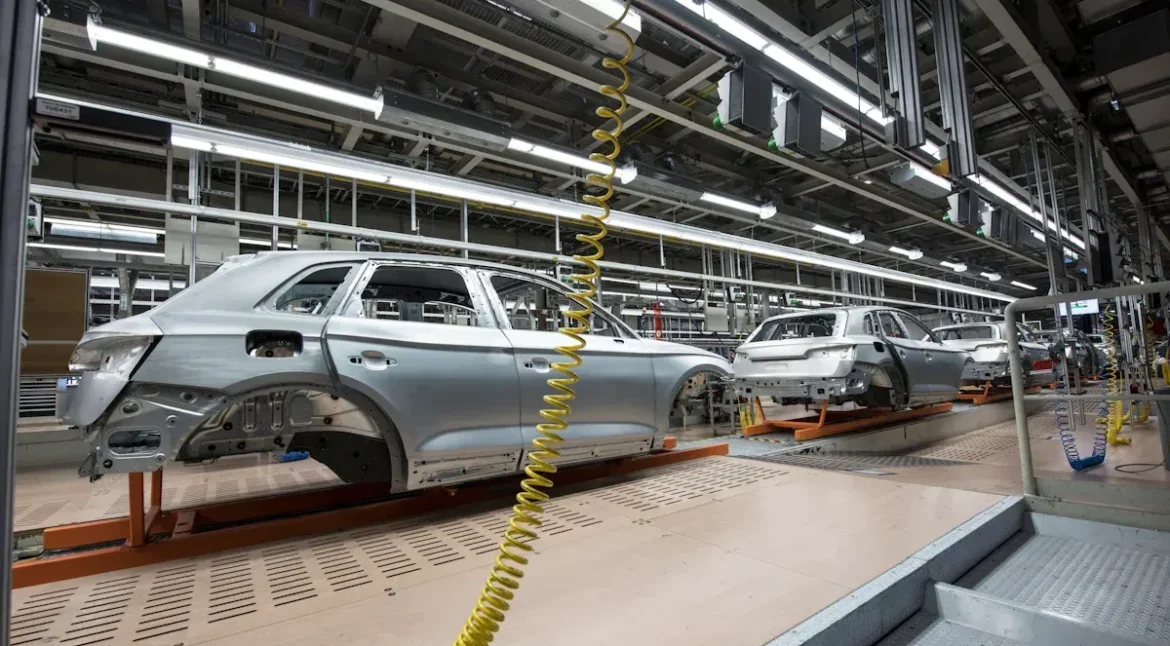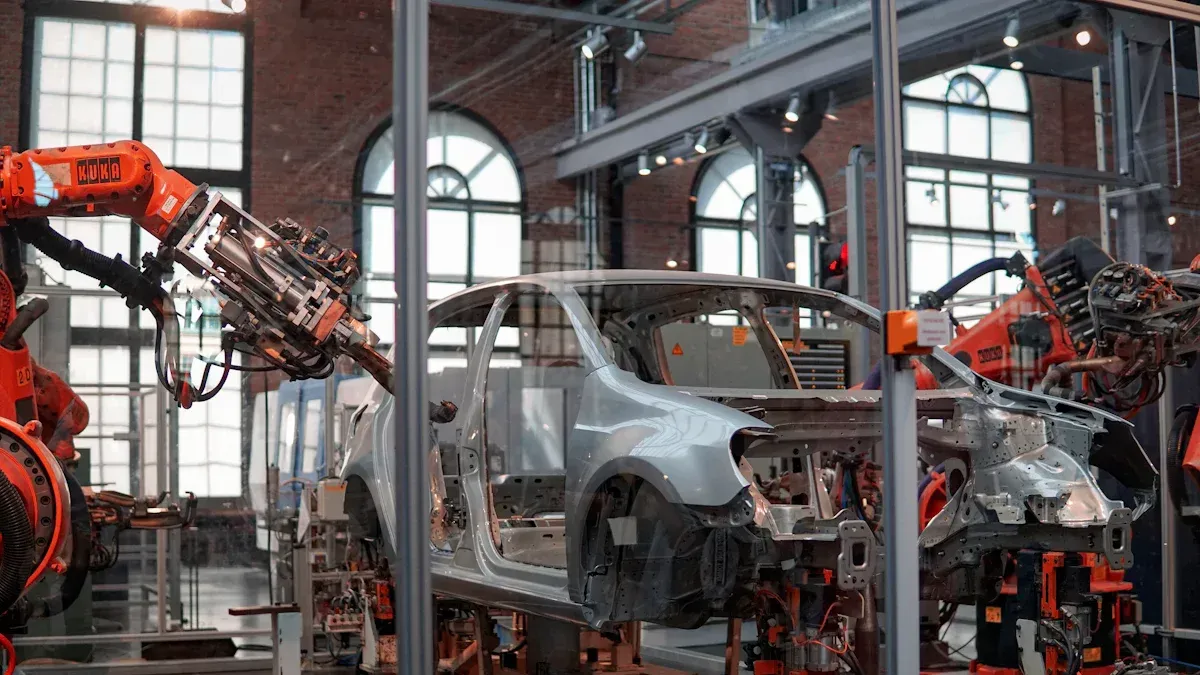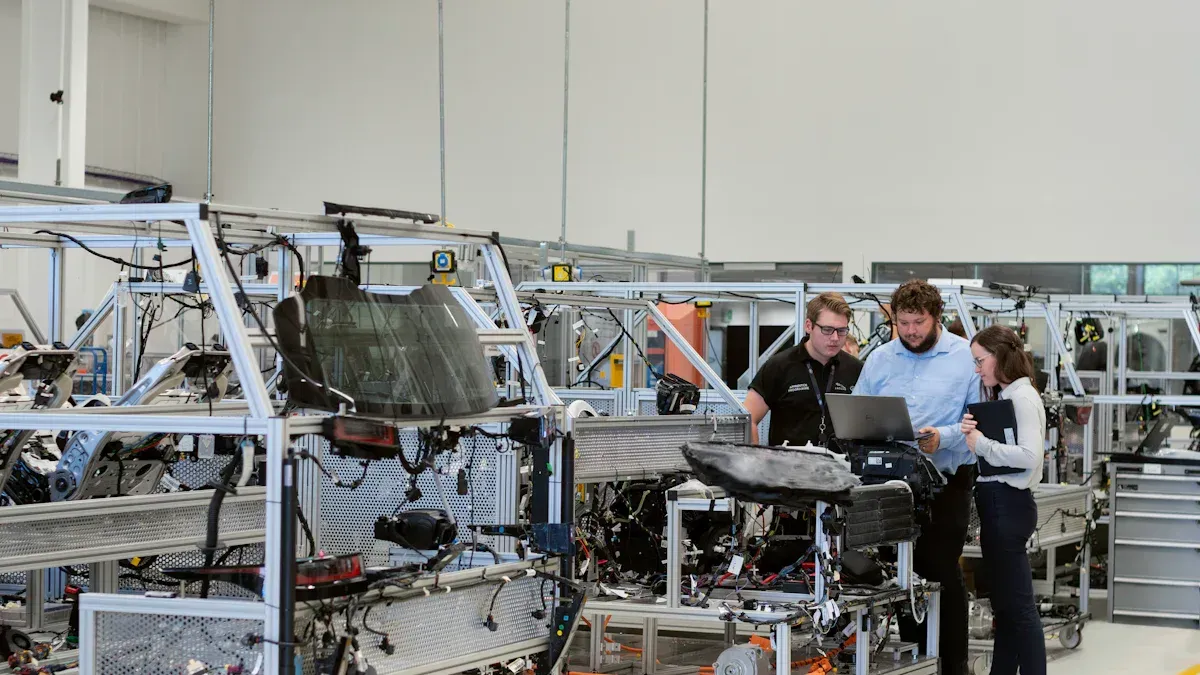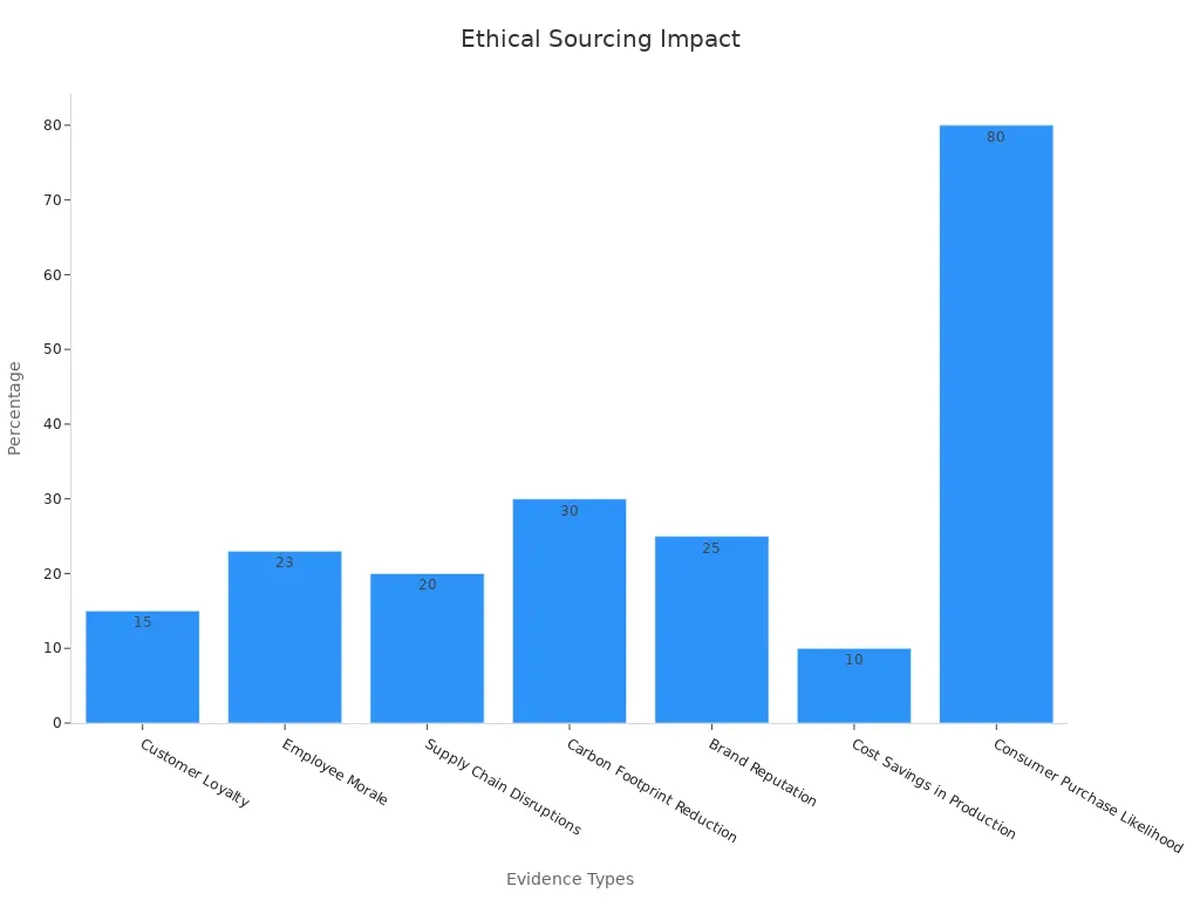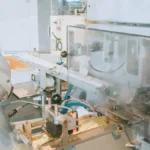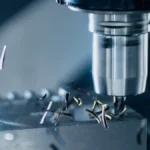The automotive industry is facing major shifts—shrinking OEM profit margins (6.2% in Q3 2024) and rising supplier profitability (7.0%) highlight increasing pressure on cost and performance. At the same time, rapid adoption of EVs, connected systems, and AI is reshaping manufacturing demands.
Advanced injection molding plays a vital role in staying competitive. High-precision molds, multi-material capabilities, and automated systems enable faster cycles, reduced waste, and scalable production. Technologies like conformal cooling, mold-flow simulation, and modular design support the evolving needs of electric and smart vehicles.
Stay ahead with agile, mold-driven innovation.
Challenges in Automotive and Parts Manufacturing
Shrinking Margins and Cost Pressures
You face increasing pressure to maintain profitability in a competitive market. Shrinking margins have become a persistent challenge, with net margins consistently declining across the industry. A closer look at key performance indicators reveals the importance of proactive strategies:
| Evidence Description | Key Insight |
|---|---|
| A consistent decline in net margin over consecutive quarters may indicate challenges. | Proactive addressing of these trends can lead to timely strategic adjustments. |
| Comparing profit margins with competitors reveals market opportunities and risks. | This can lead to actionable insights for pricing adjustments and cost efficiency improvements. |
| Continuous tracking of financial metrics is essential for early detection of issues. | Empirical data and benchmarking help in forming well-grounded business strategies. |
| Profit margins provide a comprehensive view of operational effectiveness. | They reflect competitive positioning and potential growth trajectories. |
To combat these pressures, you must focus on cost management and operational efficiency. A healthy profit margin reflects your ability to control expenses while maintaining competitive pricing. By benchmarking against competitors, you can identify opportunities to optimize costs and improve profitability.
Adapting to Technological Transitions
The rapid pace of technological advancements demands your constant attention. The rise of electric vehicles (EVs), connected ecosystems, and AI-driven processes has reshaped the landscape of automotive and parts manufacturing. For instance:
- The EV market is projected to grow at a compound annual growth rate (CAGR) of over 20% in the next five years.
- Technology investments accounted for 30% of operating budgets in 2024, compared to 23% in 2023.
- 98% of manufacturers began their digital transformation journey in 2023, up from 78% in 2019.
These trends highlight the importance of embracing innovation. Investing in technologies like cloud computing, generative AI, and 5G can yield significant returns. You must also ensure that your workforce is equipped with the skills needed to navigate this digital transformation. Staying ahead of these transitions will position you as a leader in the evolving market.
Navigating Supply Chain Complexities
Supply chain disruptions have become a critical issue in automotive and parts manufacturing. Semiconductor shortages, extended lead times, and inconsistent quality inspection protocols are just a few of the challenges you face. Consider the following complexities:
- Production sequence disruptions create inefficiencies and quality risks.
- Digital transformation gaps introduce new failure points in partially digitized processes.
- Extended lead times, caused by reshoring challenges and raw material shortages, hinder your ability to meet market demands.
- Supplier relationship challenges, including financial pressures on smaller suppliers, increase risks in quality and delivery.
To overcome these obstacles, you need to build resilient supply chain strategies. Strengthening relationships with suppliers, implementing robust quality control measures, and investing in supply chain visibility tools can help you mitigate risks. By addressing these complexities, you can ensure smoother operations and maintain your competitive edge.
Strategies for Success in Manufacturing
Enhancing Operational Efficiencies
Operational efficiency is the cornerstone of success in automotive and parts manufacturing. You can achieve measurable improvements by adopting proven strategies that streamline processes and reduce waste. Lean manufacturing principles, for instance, focus on eliminating inefficiencies and optimizing workflows—an approach that applies directly to injection molding operations. Optimizing mold changeover times, reducing cycle times, and standardizing molding processes can lead to a 15–20% boost in labor productivity and a 60–90% reduction in lead times. Similarly, Six Sigma methodologies help minimize defects in molded parts and improve overall mold performance, resulting in average savings of 1.2–2.5% of total revenue.
Automation and digital transformation further enhance efficiency. In injection molding, the integration of IoT-enabled machines and smart mold monitoring systems allows real-time tracking of temperature, pressure, and cycle consistency, contributing to a 34% increase in productivity and a 22% acceleration in production cycles. Advanced inventory management—including mold component tracking and spare parts forecasting—reduces excess stock by 20–35%, freeing up resources for other critical operations. Continuous improvement practices, such as kaizen, support ongoing mold optimization and team collaboration, contributing to industry-wide annual savings of $2.5 billion.
| Strategy | Measurable Improvement |
|---|---|
| Lean Manufacturing | 15-20% improvement in labor productivity |
| 60-90% reduction in lead times | |
| 30-40% reduction in floor space utilization | |
| Six Sigma | Average savings of 1.2-2.5% of total revenue |
| Automation and Digital Transformation | 10-12% improvement in overall equipment effectiveness |
| 15-30% reduction in maintenance costs | |
| IoT Solutions | 34% average productivity increase |
| 32% cost reductions within three years | |
| Advanced Inventory Management | 20-35% average inventory reductions |
| Cloud-Based Systems | 22% faster production cycles |
| 23% lower IT infrastructure costs | |
| Continuous Improvement Mindsets | Estimated annual savings of $2.5 billion from kaizen |
| Cross-Functional Collaboration | 35-50% faster resolution of production issues |
By leveraging these strategies, you can optimize your operations and maintain a competitive edge in the automotive and parts manufacturing sector.
Driving Innovation Through Customization
Customization is a powerful driver of innovation in automotive manufacturing. By tailoring products to meet specific customer needs, you can differentiate yourself in a crowded market. Big data analytics plays a pivotal role in this process, enabling you to analyze consumer preferences and predict future trends. Companies that have implemented data-driven solutions report a 30% improvement in operational efficiency and a 25% reduction in maintenance costs.
A notable example involves a historic automobile manufacturer that integrated big data analytics across its systems. This approach allowed the company to identify buying habits and forecast utilization patterns, leading to a 37% reduction in warranty expenses globally. Such insights not only enhance product development but also improve customer satisfaction and loyalty.
Tip: Embrace data analytics to uncover hidden opportunities for customization. By leveraging insights from consumer behavior, you can create innovative products that resonate with your target audience.
Customization also extends to manufacturing processes. Flexible production lines and modular designs enable you to adapt quickly to changing demands, ensuring that you stay ahead of the competition. By prioritizing customization, you can foster innovation and drive growth in the automotive and parts manufacturing industry.
Leveraging Agile Manufacturing Practices
Agile manufacturing practices empower you to respond swiftly to market changes and reduce production lead times. By adopting these practices, you can achieve significant improvements in efficiency and time-to-market. For example, agile methodologies have been shown to reduce lead times by an average of 50%, with some companies reporting reductions as high as 70%. Time-to-market improvements range from 40-50%, allowing you to capitalize on emerging opportunities faster than your competitors.
| Metric | Average Improvement | Range |
|---|---|---|
| Lead time reduction | 50% | 30-70% |
| Time-to-market improvement | 40-50% | N/A |
Agility in manufacturing involves more than just speed. It requires a culture of adaptability and collaboration. Cross-functional teams play a crucial role in resolving production issues quickly, with resolution times improving by 35-50%. By fostering a collaborative environment, you can ensure that your operations remain resilient and responsive to challenges.
To implement agile practices effectively in automotive and parts manufacturing, integrate technologies like IoT, cloud computing, and smart injection molding. These tools offer real-time data on mold performance and production efficiency, enabling quick adjustments and better decision-making. Agile methods combined with intelligent mold design help reduce lead times, support flexible production, and boost responsiveness in a fast-changing market.
Technology’s Role in Automotive Manufacturing
Digital Twins for Process Optimization
Digital twins have revolutionized how you can optimize manufacturing processes, particularly in injection molding and mold development. By creating virtual replicas of physical systems—such as injection molding machines, mold components, and entire production cells—you gain real-time insights into production workflows. These digital models allow you to simulate, predict, and refine molding operations without disrupting actual production. For example, you can identify mold design inefficiencies, optimize cooling channel layouts, test new process parameters, and predict part defects or equipment failures before they occur. This proactive approach minimizes downtime, extends mold life, and enhances overall efficiency.
Additionally, digital twins enable continuous monitoring of injection molding performance. By integrating IoT sensors into molds and machines, you can collect data on temperature, pressure, injection speed, and clamp force—critical variables for maintaining part quality and process consistency. This real-time feedback helps engineers make informed decisions, ensure product traceability, and improve overall yield. Adopting digital twins in injection molding not only reduces waste and maintenance costs but also positions your operation to stay competitive in the demanding landscape of automotive and parts manufacturing.
Tip: Use digital twins to simulate production scenarios and reduce costly trial-and-error experiments.
Robotic Automation in Manufacturing
Robotic automation has become a cornerstone of modern manufacturing. By deploying robots, you can achieve significant improvements in efficiency and cost savings. Consider the following benefits:
- Workflow efficiency increases by 30%.
- Processing tasks are completed 25% faster.
- Operational costs decrease by 20%.
- Error rates drop by 40%.
Robots also enhance flexibility in production. They can handle repetitive tasks with precision, freeing up your workforce for more complex responsibilities. Post-implementation, companies often report a 30% reduction in process cycle times and a 25% boost in overall productivity. These advancements not only improve throughput but also reduce labor costs by 20%, making robotic automation a valuable investment.
Note: Integrating robotic automation ensures consistent quality and faster production cycles, giving you a competitive edge.
Sustainable and Green Manufacturing Technologies
Sustainability is no longer optional in today’s manufacturing environment. Green technologies help you reduce your carbon footprint while achieving cost savings. Companies adopting these practices have seen remarkable results:
- A Virginia company saved over $200,000 through environmental initiatives.
- A New Jersey manufacturer gained $3 million in sales and saved $500,000 via Lean and Clean Programs.
- A Wisconsin company reduced emissions and saved $75,000 in shipping costs.
- A Kansas organization saved $61,000 in equipment costs and $24,000 annually in energy expenses.
By implementing energy-efficient equipment and optimizing resource usage, you can achieve similar benefits. For instance, a New Hampshire manufacturer cut energy consumption by 10%, saving $25,000 annually. These examples highlight how sustainable practices not only benefit the environment but also improve your bottom line.
Tip: Start small by upgrading to energy-efficient machinery and gradually expand your sustainability initiatives.
Building Resilient Supply Chain Partnerships
Collaboration Between OEMs and Tier 1 Suppliers
Strong partnerships between OEMs and Tier 1 suppliers are the backbone of a resilient supply chain. These relationships ensure a stable flow of high-quality parts, enabling you to meet production demands consistently. Building such partnerships requires a foundation of trust, open communication, and shared goals.
- Trust develops through realistic expectations, consistent delivery on commitments, and transparent information sharing.
- Open communication fosters collaborative problem-solving, allowing both parties to address challenges proactively.
- Shared objectives transform suppliers into strategic partners, aligning their priorities with your business goals.
By focusing on these principles, you can create enduring relationships that drive mutual success.
| KPI | Description |
|---|---|
| Product Quality | Measures the defect rate and adherence to specifications. |
| On-Time Delivery | Tracks the percentage of deliveries made on schedule. |
| Cost Savings | Evaluates the reduction in costs achieved through collaboration. |
| Customer Satisfaction | Assesses customer feedback and satisfaction levels. |
Regular performance reviews against these KPIs ensure transparency and continuous improvement. Involving both parties in evaluations strengthens accountability and fosters a culture of excellence.
Ensuring Supply Chain Resilience
Supply chain resilience is critical in navigating disruptions like material shortages or logistical delays. You can achieve this by diversifying suppliers, investing in supply chain visibility tools, and maintaining robust quality control measures. Continuous monitoring and auditing help you uphold quality standards, enabling prompt corrective actions when deviations occur.
Periodic evaluations of supplier performance also play a vital role. These reviews ensure compliance with specifications and identify areas for improvement. Collaborative efforts to address weaknesses enhance the overall reliability of your supply chain.
Ethical Sourcing and Compliance Standards
Ethical sourcing is no longer optional—it is a strategic imperative. By prioritizing sustainable practices, you can improve brand reputation, reduce risks, and enhance operational efficiency. Companies that adopt ethical sourcing report measurable benefits:
| Evidence Type | Statistic |
|---|---|
| Customer Loyalty | 15% increase in brand loyalty |
| Employee Morale | 23% improvement in employee morale |
| Supply Chain Disruptions | 20% reduction in incidents |
| Carbon Footprint Reduction | 30% average reduction |
| Brand Reputation | 25% increase |
| Cost Savings in Production | 10% savings |
| Consumer Purchase Likelihood | 80% more likely to purchase |
Adhering to compliance standards further strengthens your position in the market. Ethical practices not only align with consumer expectations but also reduce supply chain disruptions by 20%. By integrating these principles, you can build a resilient and responsible supply chain that supports long-term growth.
Addressing the challenges in automotive and parts manufacturing is crucial for staying competitive. Shrinking margins, technological transitions, and supply chain complexities demand proactive strategies. You can overcome these hurdles by focusing on operational efficiencies—such as lean manufacturing, advanced injection molding processes, and automation—which reduce waste, improve productivity, and ensure high-precision components. Injection molding, particularly multi-cavity and multi-shot technologies, enables cost-effective mass production while meeting stringent automotive standards.
Innovation through customization and agile practices ensures adaptability in a rapidly evolving market. Injection molding allows for greater design flexibility and integration of lightweight, high-strength materials essential for modern vehicles.
Technology plays a pivotal role in driving success. Digital transformation, including the use of digital twins, robotic automation, and smart injection molding machines, enhances precision and efficiency. Investing in diagnostic equipment, mold monitoring systems, and technical training creates a competitive edge. Collaboration with Tier 1 suppliers and ethical sourcing practices strengthen supply chain resilience, ensuring long-term growth and sustainability in the automotive sector.
Tip: Improve data quality through automated systems and foster collaboration between engineers and data scientists. These steps will help you adapt to modern vehicle complexities and seize opportunities in the electric vehicle market.


